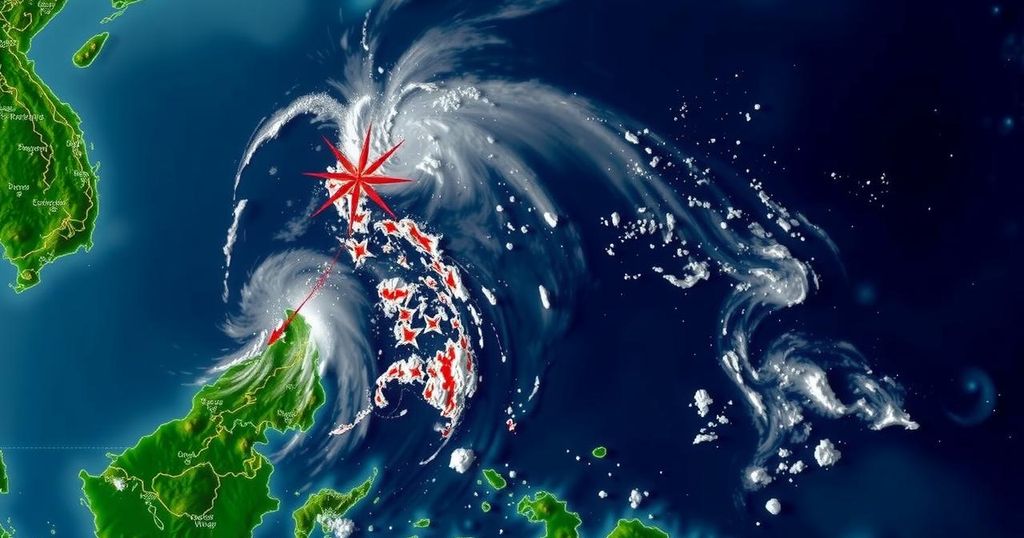Typhoon Toraji Devastates Northern Philippines as Another Storm Approaches

Typhoon Toraji has caused severe flooding and power outages in northern Philippines, displacing thousands. Amid ongoing disaster response efforts, authorities brace for another approaching storm. President Ferdinand Marcos Jr. assures that aid is on the way as clearing operations continue. The country grapples with repeated calamities from back-to-back storms, reinforcing its status as one of the world’s most disaster-prone nations.
Typhoon Toraji has severely impacted the northern Philippines, resulting in flooding, downed vegetation, and power outages. As the typhoon weakened into a tropical storm, authorities prepared for another impending weather disturbance originating in the Pacific. The relentless series of storms, including Toraji, has caused extensive damage to communities and agricultural lands in Luzon over a month. Although no casualties have been reported from Toraji, the aftermath has left thousands displaced and necessitated urgent government response. Road clearance operations and the distribution of relief supplies are ongoing, with President Ferdinand Marcos Jr. assuring timely aid following these calamities. In Cagayan province, where the storm’s effects were felt the hardest, numerous villages experienced flooding, rendering 22 bridges impassable. Preparations for Toraji included mandatory evacuations in nearly 2,500 villages prone to flooding. Educational institutions were closed, and transportation services, including ferries and domestic flights, were halted as safety measures in anticipation of worsening weather conditions. The destructive capacity of Toraji is underscored by its capacity to unleash a month’s worth of rainfall within just 24 hours in some areas. The Philippine government, overwhelmed by the recurring natural disasters, received international assistance from allies such as the United States and neighboring Southeast Asian nations to facilitate the delivery of essential supplies. The archipelago is regularly besieged by around 20 typhoons annually, alongside earthquakes and volcanic activity, solidifying its reputation as one of the globe’s most catastrophe-prone nations. This latest weather event is a stark reminder of the vulnerabilities faced by the populace, echoing the devastation wrought by the infamous Typhoon Haiyan in 2013 that left over 7,300 people dead or missing.
The Philippines is situated in a region vulnerable to tropical cyclones, resulting in an annual barrage of around twenty such storms. Typhoon Toraji is part of a series of back-to-back weather disturbances that have seriously affected the northern region, particularly Luzon. The recurring nature of these disasters has drawn attention to the country’s need for robust disaster preparedness and response strategies. Typhoon and storm-induced flooding can devastate agricultural output and disrupt communities, with the government often relying on both domestic and international assistance for relief efforts following such calamities.
In conclusion, Typhoon Toraji has inflicted significant damage on the northern Philippines, exacerbating the ongoing challenges from a series of recent natural disasters. With thousands displaced and vital infrastructure compromised, the government is mobilizing resources to support affected communities. As the threat of another storm looms, the resilience of the Filipino people and the necessity for effective disaster response are underscored, alongside the ongoing need for international collaboration in humanitarian efforts.
Original Source: www.seattletimes.com




